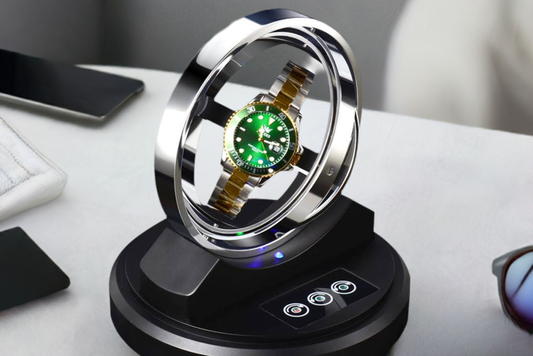Understanding Fossil Watch Movements
Fossil watches come with two main types of movements: automatic and hand-wound.
Automatic Watches
Automatic watches, also known as self-winding watches, are powered by the natural movements of your wrist. They feature a rotor that oscillates with your movements, winding the mainspring and storing energy. Some key points about automatic Fossil watches:
- They do not require daily winding, as long as you wear them regularly.
- If not worn for an extended period (usually around 35 hours), they may stop working and require manual winding to restart.
- Prices for Fossil automatic watches range from $240 to $395, with various styles available, including mechanical and skeleton designs.
Credit: YouTube Channel - Timed Square
Hand-Wound Watches
Hand-wound watches, as the name suggests, require manual winding to keep them running. To wind a hand-wound Fossil watch:
- Locate the crown on the right side of the watch case.
- Gently pull the crown out to the winding position.
- Turn the crown clockwise until you feel resistance. Be careful not to overwind, as this can damage the mainspring.
- Push the crown back to its original position.
It's recommended to wind your hand-wound Fossil watch daily to ensure optimal performance.
Using a Watch Winder
If you own multiple automatic watches or don't wear your Fossil watch daily, a watch winder can be a convenient solution to keep your timepiece running. Watch winders simulate the natural movements of your wrist, keeping the watch wound and ready to wear.
When choosing a watch winder for your Fossil watch, consider the following:
- Winding direction (clockwise, counterclockwise, or both)
- Turns per day (TPD) required for your specific model
- Winder style and size to accommodate your watch
For example, the Fossil Radios Automatic model with a Miyota 8200 movement requires 650-950 TPD in the clockwise direction, while the FSW1000 model needs 650 TPD in a combined clockwise and counterclockwise mode.
Setting the Time and Date
In addition to winding, you may need to set the time and date on your Fossil watch. Consult your watch's manual for specific instructions, as the process may vary slightly between models. Generally, the steps involve:
- Pulling the crown out to the time-setting position
- Rotating the crown to set the hour and minute hands
- Pushing the crown back to its original position
Some Fossil watches also feature a date display, which can be adjusted using a similar process.
Conclusion
Proper winding is crucial to keep your Fossil watch running accurately and extend its lifespan. By understanding your watch's movement type and following the appropriate winding techniques, you can ensure your timepiece remains a reliable companion for years to come. Remember to wind your watch regularly, use a watch winder if needed, and refer to your watch's manual for specific care instructions.
We hope this guide has been helpful in demystifying the process of winding your Fossil watch. If you have any further questions or experiences to share, please leave a comment below. And if you found this article informative, don't forget to share it with your fellow Fossil watch enthusiasts!
FAQs
How often should I wind my automatic Fossil watch?
If you wear your automatic Fossil watch regularly, it should maintain its power reserve without the need for daily winding. However, if you notice the watch stopping or running slowly, you may need to give it a few manual winds to get it started again.
Can I overwind my Fossil watch?
Modern Fossil watches are designed with safeguards to prevent overwinding. However, it's still important to be gentle when winding your watch and stop when you feel resistance to avoid putting unnecessary strain on the mainspring.
How long does the power reserve last on a Fossil automatic watch?
The power reserve on a Fossil automatic watch typically lasts around 35-40 hours, depending on the specific model and movement. If you don't wear your watch for an extended period, it may stop running and require manual winding to restart.
Do I need to wind my Fossil watch if I use a watch winder?
If you use a watch winder with the correct settings for your Fossil watch, it should keep the timepiece wound and ready to wear without the need for manual winding. However, it's still a good idea to occasionally wear your watch to ensure it maintains its accuracy and power reserve.




